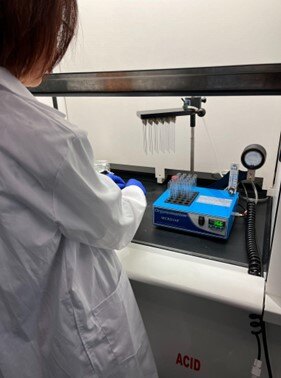
Creatine plays a critical role in energy metabolism, especially as it pertains to the neurological and muscular systems of the body. Disruptions in its synthesis, due to mutations in different genes, can lead to creatine deficiency syndromes, resulting in neurological and muscular issues such as developmental delays, cognitive impairments, and muscle weakness. Labs such as the Hospital for Sick Children in Toronto focus on understanding how creatine regulates AGAT expression and activity, and explore small molecules that could suppress AGAT to reduce harmful metabolites. By studying both human and mouse samples, the lab looks to uncover therapeutic strategies to address metabolic and neurological challenges associated with creatine deficiencies.
Ilona Tkachyova, a researcher at the Hospital for Sick Children in Toronto, focuses on these syndromes through studying the AGAT gene, which catalyzes the beginning reactions in creatine synthesis. Her research investigates how creatine regulates AGAT expression and activity and explores small molecules that could suppress AGAT to reduce harmful metabolites. Specifically, the lab focuses on creatine deficiency syndromes that result from pathogenic variants in either GATM or GAMT through mutations in SLC6A8 genes. By studying both human and mouse samples, the lab looks to uncover therapeutic strategies to address metabolic and neurological challenges associated with creatine deficiencies.
The lab currently has two main areas of investigation. The first is to determine the mechanism in which creatine regulates expression and activity of AGAT and the second is to find small molecules to suppress AGAT expression and activity in an attempt to decrease synthesis of GAA. Problems with these genes can lead to deficiencies with metabolism, as well as neurological and muscular issues.
The lab uses Organomation’s MICROVAP sample concentrator to prep their human urine, plasma, CSF, mouse urine and plasma, and tissue homogenate samples ahead of LC-MS/MS for analysis. Their plasma and urine samples are treated only with methanol prior to nitrogen blowdown. To prep tissue homogenates, the samples first undergo protein precipitation by centrifugation with the addition of TCA and then methanol. There is a step of derivatization that occurs prior to the samples cooling. The supernatant is then evaporated to dryness at 60°C for 30 minutes using the MICROVAP. After allowing these to cool, the derivatized samples are again evaporated for 30 minutes prior to resuspension in methanol.
Once prepared, samples are analyzed on an ExionLC AD UHPLC system coupled with QTRAP 6500 plus. More details on this research is published in the International Journal of Molecular Science.
Overall, this lab finds the MICROVAP to be incredibly reliable and long lasting. In our discussion, Ilona explained to us how their MICROVAP is used daily. When asked about the usage of the unit, Ilona response was,
“It [the MICROVAP] is used on a daily basis. That little unit works hard! It is used routinely”.
They have had their MICROVAP evaporator for 5 years and are still able to depend on it daily, which has given them ease of use in their sample preparation workflow. Ilona also appreciates how long our products have been on the market, as well as how critical our instrument is to the lab's application process.
“It has not only improved [the workflow], it is essential. We would not be able to do any sample prep without it. It is a part of the application process. I like that it has been on the market for a very long time and the quality of the unit is great. Some companies change to materials like plastics, but you guys are still reliable, and I am happy to be using the product. I only have good things to say”.
If you're in need of a nitrogen evaporator for your sample preparation workflow, talk to our experts today at sales@organomation.com or use our sample evaporator product finder tool!
